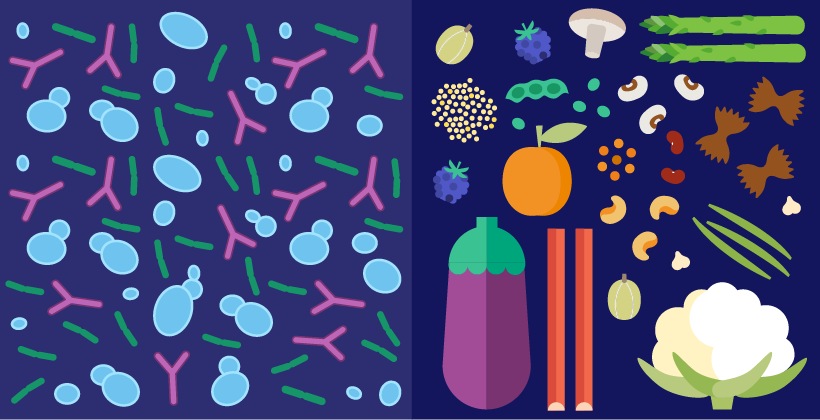Health in Europe: An update
Last Updated : 06 March 2013Despite some disparities, great progress has been achieved in recent decades in the health of Europeans. With changing economic circumstances, it is particularly important that changes in health status and behaviours continue to be monitored.
Food Today no 76 included a report from the Organisation for Economic Co-operation and Development (OECD) on health across Europe.1 Two years on, the OECD has published an updated edition, ‘Health at a Glance: Europe 2012’.2
What’s new?
The report features more comprehensive data of 35 countries and new information on the quality of healthcare.2 More countries are included - the 27 European Union (EU) Member States, plus Iceland, Turkey, Norway, Switzerland, Serbia, Croatia, Montenegro and the Former Yugoslav Republic of Macedonia. The snapshot below summarises aspects most relevant to healthy lifestyles.
Health at a Glance: Europe 2010 | Health at a Glance: Europe 2012 |
Health status | |
|
|
|
|
|
|
|
|
Determinants of health | |
|
|
|
|
|
|
Lifestyle-related diseases – where do we stand?
Cardiovascular disease
Cardiovascular disease accounted for 36% of all deaths in Europe in 2010. France, Italy, Portugal and Spain have the lowest rate of death from heart disease, lending support to the hypothesis regarding the benefits of a Mediterranean-type diet. Countries with reductions in death rates from heart disease (e.g. Netherlands, Denmark, UK, Ireland), or low mortality rates from stroke (France, Netherlands, Cyprus, Ireland), have achieved this through reductions in smoking and/or hypertension, as well as improvements in medical treatment.
Cancer
Cancer accounts for 28% of all deaths in Europe in 2010. Survival rates for different types of cancer have generally improved in most countries, however, these are lower for men, partly explained by greater risk factors and lower use of screening (detection). Among women, breast cancer is the most common, and prostate cancer has become the most common among men. The causes of prostate cancer are not well understood, but may be involve environmental and dietary factors.
Diabetes
Diabetes continues to show epidemic proportions; in 2011, over 6% of the population (30 million people) aged 20-79 years in EU Member States had diabetes. Type 1 diabetes (in which the body is unable to produce insulin) accounts for 10-15% of all cases and there is concern that it is developing at a younger age in children. Obesity and physical inactivity are two preventable risk factors of Type 2 diabetes (which arises from reduced insulin production or insulin insensitivity) and its associated complications. This is of major significance, since the prevalence of overweight and obesity continues to rise.
Overweight and obesity
Fifty-two percent of the EU population either have overweight (Body Mass Index (BMI) 25-29.9 kg/m2) or obesity (BMI ≥ 30 kg/m2). The prevalence of obesity varies from 8% in Romania and Switzerland, to 25% in UK and Hungary, with an average of 17% across the EU (15.5% in the previous report).1 Based on self-reported height and weight, from the Health Behaviour in School-aged Children (HBSC) 2009/2010 survey, one in six boys and one in ten girls aged 15 years are affected by obesity or overweight.3 Youths with overweight are more likely to skip breakfast, are less physically active and spend more time watching television. Interventions are focusing on the provision of healthy food options and encouraging physical activity. There is renewed interest in fat and sugar taxes, introduced in several countries, but it is too early to assess their effectiveness.
Food and drink consumption and physical activity
Alcohol consumption
Alcohol consumption has also decreased since 1980 in many countries including France, Italy and Spain, but has risen in others (Cyprus, Finland, Ireland). In children aged 15 years, there has been some declines in self-reported ‘drunkenness’ (being drunk at least twice in their lifetime) since the late 1990s; however, rates have increased in Estonia, Hungary, Latvia, Lithuania and Poland.
Fruit and vegetable consumption
Fruit and vegetable consumption is an important marker of healthy eating, estimates in the 2012 report included survey data from adults. Across EU member states, about 63% of adults reported eating fruit and vegetables daily, in 2008. In the Health Behaviour in School-aged Children (HBSC) 2009/10 survey only about 33% of girls and 25% of boys aged 15 years reported eating fruit at least once per day (relatively unchanged since the last report).3 The results were similar for vegetable consumption.
Physical activity
Only about 1 in 5 children (11 and 15 years old) reported activity levels that meet the advised daily 60 minutes of moderate-to-vigorous activity. Compared to the previous survey (2005-06), reported activity levels fell slightly for both boys and girls. Physical activity declines between the ages of 11 and 15 years, possibly reflecting a change from active “playing” to more structured activities and sports.
Into the future
Across Europe there are rising trends in obesity and diabetes. Although in the last decades much has been achieved in population health, much work remains to be done in promoting healthy lifestyles. The report highlights that the impact of reduced public spending on health will need to be monitored.
References
- Food Today 03/2011. Health in Europe - how are we doing?
- OECD (2012). Health at a Glance: Europe 2012, OECD
- Currie C et al. (2012). HBSC study: international report from the 2009/2010 survey. Copenhagen: WHO Regional Office for Europe.








